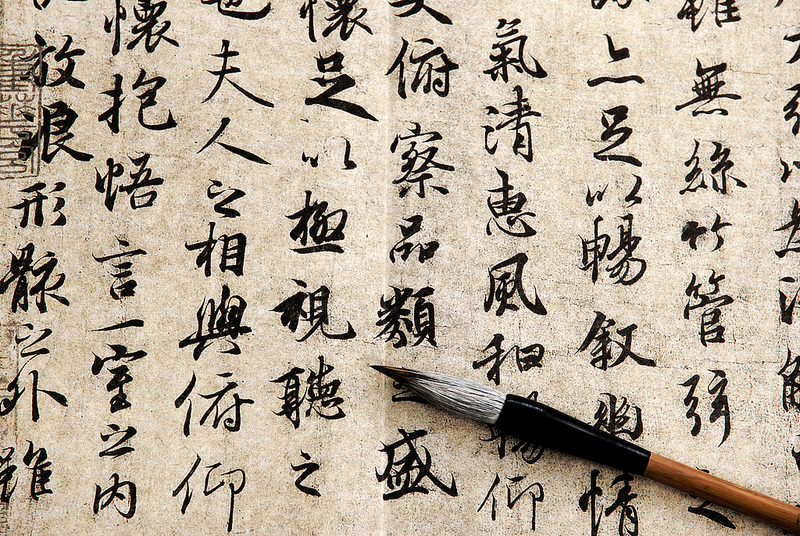Chinese characters are logograms
Chinese characters are logograms used in the writing of Chinese and some other Asian languages. In Standard Chinese they are called Hanzi (simplified Chinese: 汉字; traditional Chinese: 漢字).[2] They have been adapted to write a number of other languages including: Japanese, where they are known as kanji, Korean, where they are known as hanja, and Vietnamese in a system known as chữ Nôm. Collectively, they are known as CJKV characters. In English, they are sometimes called Han characters.[3][4] Chinese characters constitute the oldest continuously used system of writing in the world.[5] By virtue of their widespread current use in East Asia, and historic use throughout the Sinosphere, Chinese characters are among the most widely adopted writing systems in the world.
Chinese characters number in the tens of thousands, though most of them are minor graphic variants encountered only in historical texts. Studies in China have shown that functional literacy in written Chinese requires a knowledge of between three and four thousand characters.[6] In Japan, 2,136 are taught through secondary school (the Jōyō kanji); hundreds more are in everyday use. There are various national standard lists of characters, forms, and pronunciations. Simplified forms of certain characters are used in China, Singapore, and Malaysia; the corresponding traditional characters are used in Taiwan, Hong Kong, Macau, and to a limited extent inSouth Korea. In Japan, common characters are written in post-WWII Japan-specific simplified forms (shinjitai), which are closer to traditional forms than Chinese simplifications, while uncommon characters are written in Japanese traditional forms (kyūjitai), which are virtually identical to Chinese traditional forms. In South Korea, when Chinese characters are used they are of the traditional variant and are almost identical to those used in places like Taiwan and Hong Kong. Teaching of Chinese characters in South Korea starts in the 7th grade and continues until the 12th grade where 1,800 total characters are taught albeit these characters are not really used in everyday life and are slowly declining in use.

In Old Chinese, (e.g. Classical Chinese) most words were monosyllabic and there was a close correspondence between characters and words. In modern Chinese (esp.Mandarin Chinese), characters do not necessarily correspond to words; indeed the majority of Chinese words today consist of two or more characters due to the merging and loss of sounds in the Chinese language over time.[7] Rather, a character almost always corresponds to a single syllable that is also a morpheme.[8] However, there are a few exceptions to this general correspondence, including bisyllabic morphemes (written with two characters), bimorphemic syllables (written with two characters) and cases where a single character represents a polysyllabic word or phrase.[9]
Modern Chinese has many homophones; thus the same spoken syllable may be represented by many characters, depending on meaning. A single character may also have a range of meanings, or sometimes quite distinct meanings; occasionally these correspond to different pronunciations. Cognates in the several varieties of Chineseare generally written with the same character. They typically have similar meanings, but often quite different pronunciations. In other languages, most significantly today inJapanese, characters are used to represent Chinese loanwords, to represent native words independent of the Chinese pronunciation, and as purely phonetic elements based on their pronunciation in the historical variety of Chinese from which they were acquired. These foreign adaptations of Chinese pronunciation are known as Sino-Xenic pronunciations, and have been useful in the reconstruction of Middle Chinese.

Leave a Reply